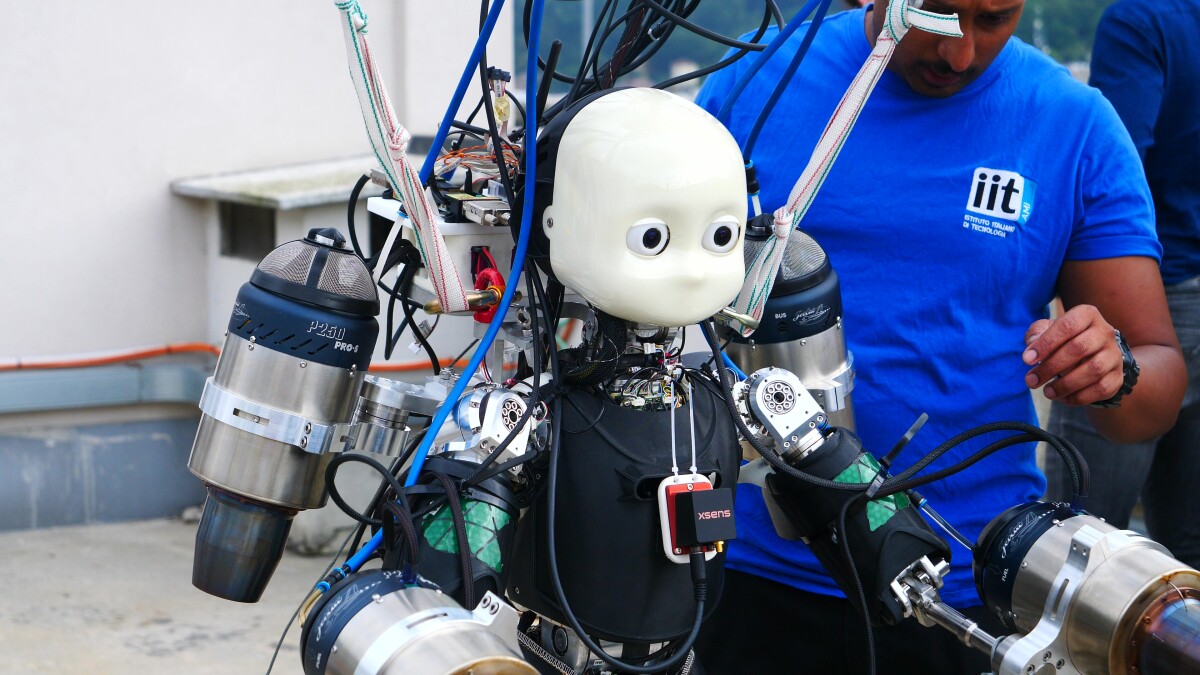Engineers are Creating a Jet-Powered Flying Robot for Disaster Response

Istituto Italiano di Tecnologia
Imagine you’re injured on a remote mountain trail and have contacted emergency services. If Italian research is successful, a small humanoid robot with a jetpack might be the first responder to reach you.
This project, developed by the Artificial and Mechanical Intelligence group at the Italian Institute of Technology (Istituto Italiano di Tecnologia), is focused on getting the iCub, a child-sized biped originally designed for AI research, airborne using jet propulsion.
Jet-Powered Enhancements to Humanoid Design
In addition to attaching a twin jet pack to the robot’s back, the team replaced the original flexible, human-like hands with additional jet engines, known as JetCats. According to the researchers, these engines can produce a maximum thrust of 1,000 N (approximately 225 lbf) and reach exhaust temperatures of up to 800 °C (1,472 °F).
Upgrades for Strength and Durability
The Tony Stark-inspired iRonCub3 has been upgraded with a newly designed titanium spine to withstand the forces it will encounter and now features heat-resistant covers instead of the stylish outer suit used on an earlier prototype.
The team has also designed new electronics, installed force-torque sensors in the jetpack, and removed certain components to accommodate the updated system.
As shown in the video above, the project is still in its early development stages. However, the team has already tested the jet-powered humanoid in a wind tunnel to verify aerodynamic simulations. Although the jets have been activated several times, the iRonCub3 has not yet taken flight. Despite this, the team is confident that it will soon achieve hovering.
In addition, flight control algorithms have been developed and tested, and a trajectory planner has been validated through simulations. The team is now working on estimating the robot’s position and orientation in space using data from its inertial measurement unit and a chest-mounted RealSense depth camera.

Istituto Italiano di Tecnologia
Unique Challenges in Jet-Powered Robotics
“The complexity of this research is quite different from the typical challenges in humanoid robotics,” the researchers noted. Thermodynamics is crucial because the turbine exhaust gas reaches around 800 degrees Celsius and nearly the speed of sound.
The aerodynamics of multi-body systems require neural networks with physics-informed components to be evaluated in real time. Controller settings must integrate high- and low-bandwidth actuators for both joints and turbines, and planners need to generate trajectories not just for the motors but also for the turbines. Experimental validation is both serious and hazardous, leaving little room for error.
The ultimate goal is to develop humanoid robots capable of flying to disaster or emergency sites to perform aerial inspections or provide crucial data to remote teams. These robots would also be able to land, walk, navigate obstacles, climb stairs, open doors, and more. Such capabilities would be useful for early-stage rescues and for inspecting dangerous buildings or infrastructure.
Read the original article on: New atlas
Read more: Video: Google Robot Plays Table Tennis with Humans










